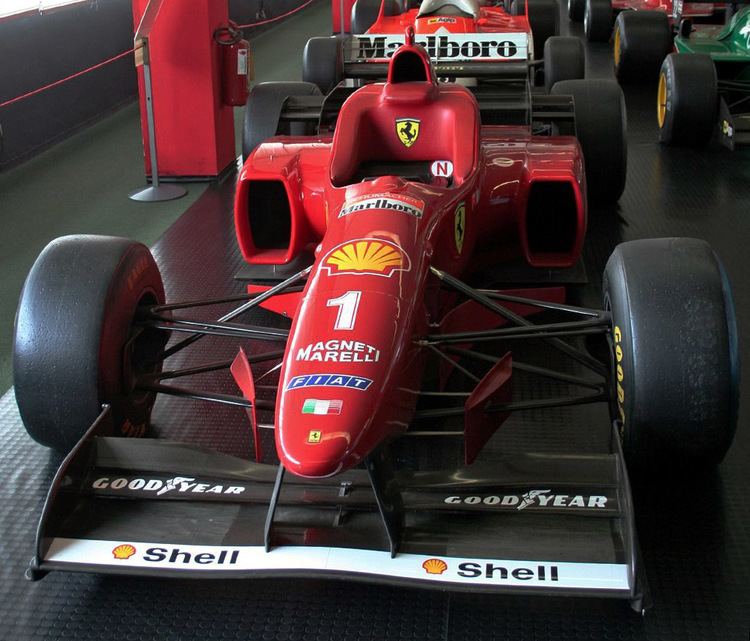 | ||
Chassis carbon-fibre and honeycomb composite structure | ||
The Ferrari F310, and its evolution, the F310B, were the Formula One racing cars with which the Ferrari team competed in the 1996 and 1997 seasons. It was driven in both years by Michael Schumacher and Eddie Irvine.
Contents
The F310 and F310B won a total of eight Grands Prix, 22 podiums, 7 pole positions and 172 points.
F310
The F310 proved to be a front-running car, but without the outright pace or superb reliability which led to the Williams FW18s dominating 1996. Schumacher was able to win three Grands Prix, but the F310's shortcomings were shown by Irvine's run of eight consecutive retirements, most of them mechanical, as well as three straight double retirements. Development also proved troublesome, with the cars having to use the 1995 car's parts early in the season whilst structural problems were cured.
This car was notable as being the first Ferrari F1 car to use the then more conventional V10 engine format, because a V10 engine offered the best compromise between power and fuel efficiency; the V12 was powerful but thirsty, and vice versa for a V8. The name F310 refers to the engine type, a 3 litre, 10 cylinder (V10) - a nomenclature consistent with that used for Ferrari's F1 cars from 1966 to 1980 (the 312, 312B and 312T), and similar to that used for the 2006 Ferrari 248. The engine was also called the 310.
Initially, the F310 was the only car in the 1996 field to have a low nose section, with the other teams having all switched to the more aerodynamically efficient high nose which was first seen on the 1990 Tyrrell 019. From the start, however, chief designer John Barnard had announced his intentions to design a high nose for the car, saying that the F310 would be an ongoing project with the ultimate goal to win the world championship. The high nose was eventually adopted permanently from the Canadian Grand Prix onwards. In an interview in 2012, Irvine did not have fond memories of the F310, calling it "an awful car" a "piece of junk" and "almost undriveable", as did John Barnard, who admitted that the car "wasn't very good".
F310B
With the hiring of Rory Byrne and Ross Brawn to replace Barnard, part of the dream-team that would give Ferrari six straight Constructors' Championships from 1999 to 2004, they used the F310 as a base for the F310B, improving its shape and mechanicals, making a 5 time winning car in the process.
Regardless, double-champion Michael Schumacher held truth on his 1995 promise that "in 1996 we will win three grands prix, then in 1997 we will challenge for the championship" by taking the challenge to the last round. He was, however, unable to hold off a storming drive by title challenger Jacques Villeneuve; a botched attempt by Schumacher at defending his position ended up with him in the gravel, retired and eventually disqualified from the 1997 season results. The team nonetheless retained their constructors' points.
Complete Formula One results
(key) (results in bold indicate pole position; results in italics indicate fastest lap)
